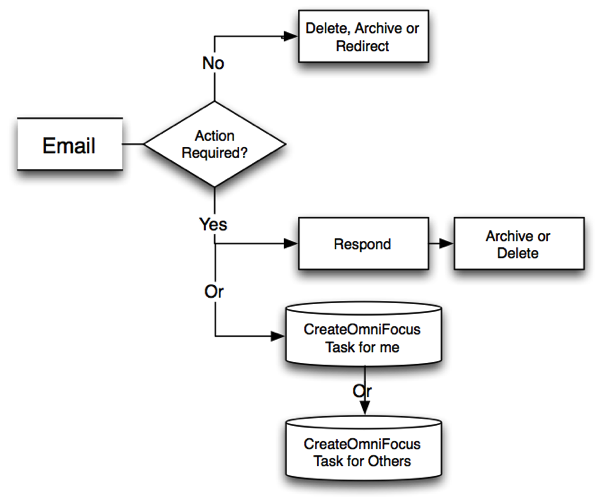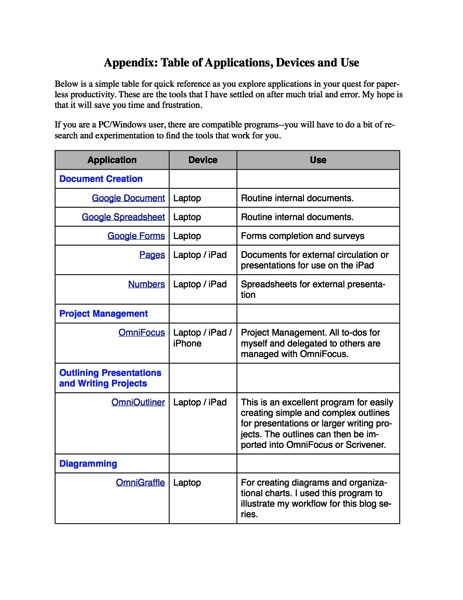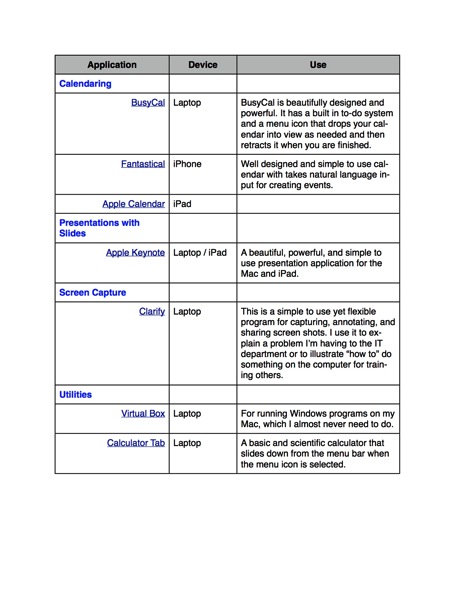How and Why I Went Paperless and How You Can Too: Part 3 Workflow--Putting it All Together
/In my previous two posts in this series (Part 1: Why I went Paperless--There Had to Be a Better Way and Part 2:How I Went Paperless: What I Use) I explained why I have gone paperless and the hardware and software that I use. In this third and final article in the series I will demonstrate how I work paperlessly. I am also including diagrams to illustrate the process for emails, paper documents, and meetings.
It is one thing to have a fleet of powerful applications at your disposal. It is quite another to develop a workflow using those applications that is easy, efficient, and dependable. The process of creating such a workflow is never done but I believe I have reached the point where I spend little time managing documents, communications, and applications and more time focused on what is important—people and projects.
Here, in brief, is a sample of how I have managed to create an almost frictionless, paperless workflow. This is obviously not comprehensive but I hope it provides an example of how to process all the information coming your way without paper.
Incoming Emails
I usually deal with email in batches (it is far more efficient that way). For each email I receive, I do one of the following:
- Delete it
- Archive it
- Forward/Redirect to the appropriate person
- Delegate it as a follow-up or project for someone; I forward the email to him/her and simultaneously create a follow-up task in OmniFocus directly from the email
- Create a task or project for myself
I do not use my email inbox to track todos and follow-ups!
Incoming paper
When I receive paper or printed documents from others, I do one or more of the following:
- I ask my staff to send it to me digitally—I do not accept paper from staff. If the document is from a non-school employee, I also ask for a digital version if I deem it appropriate and polite.
- Trash it
- Scan and archive it
- Scan and email the document to someone else as a delegated task or project and simultaneously create a follow-up task in OmniFocus directly from the email
- Create a task for myself if related to a project.
Meeting Notes
Here is how I handle meeting notes:
- I use ByWord to take my notes (see above for details)
- After the meeting, I create projects and/or tasks for others and/or myself in OmniFocus (OF) from the action items in my notes.
- After creating the OF projects and/or tasks, I archive the notes in Evernote and link the notes to the tasks/projects in OmniFocus for reference.
- For a project involving more than one person, I create a collaborative document in Google Drive for those working on the project and link the Google document to the OmniFocus project.
OmniFocus
The following diagrams illustrate how the above processes look in OmniFocus:
The Due Date Perspective
Actions Items in Project Perspective
The Hard Work of Creating New Habits
I wish I could tell you this will be easy. It is not.
When first starting your journey to the paperless promise land you will have some mountains to climb and rivers to cross. You will initially increase your stress and reduce your productivity as you learn new programs and develop a new workflow. It takes time and consistency to master a new routine and form new habits.
How long does it take to create a new habit? Accordingly to research, over two months. “We are all wired differently so how long it takes for us to form a new habit will depend on each person. The popular psuedo-myth is that a new habit forms after 21 to 28 days. However, psychology research from the European Journal of Social Psychology seem to indicate that it takes around 66 days to truly ingrain a new habit into your brain. At 66 days of continuous activity, that habit is going to be as much of a habit as it is ever going to be. In other words, the action has become automatic and that habit is never going to get more habitual.”
In short, hang in there! This is not a sprint, it is a marathon.
Final Thoughts
If you find yourself struggling to manage the tsunami of information coming at you in paper and digital form, you find yourself working feverishly to juggle multiple projects and if you want to reduce stress and increase your productivity, I recommend that you consider going paperless.
Give it try-going paperless will save you time, money, and stress once you master the tools and workflow. It will be worth the time and effort. At the end of a hard journey is a better place for your professional and personal life.
Appendix: Table of Applications, Devices and Use
NOTE: You can download this Appendix as a PDF here.
Below is a simple table for quick reference as you explore applications in your quest for paperless productivity. These are the tools that I have settled on after much trial and error. My hope is that it will save you time and frustration.
If you are a PC/Windows user, there are compatible programs--you will have to do a bit of research and experimentation to find the tools that work for you.











